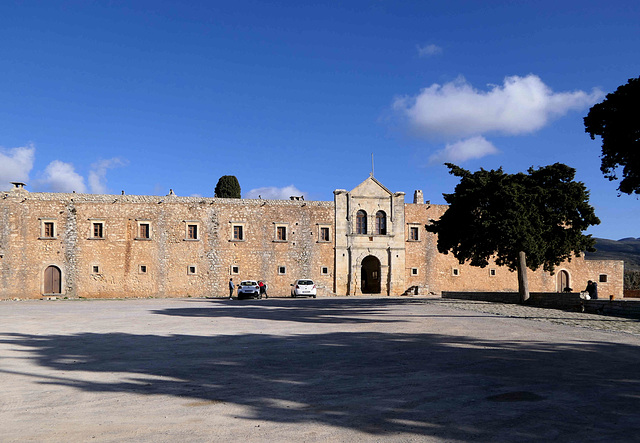Arkadi Monastery
Arkadi Monastery
Arkadi Monastery
Arkadi Monastery
Arkadi Monastery
Arkadi Monastery
Heraklion - Athali
Heraklion - Athali
Heraklion - Hovoli
Heraklion - Hovoli
Saint George Monastery
Saint George Monastery
Saint George Monastery
Aptera - Koules fortress
Fortaleza de Izzedin
Souda
Aptera
Aptera
Tholos of Maleme
Tholos of Maleme
Tholos of Maleme
Gonia Monastery
Gonia Monastery
Crete
Myriokefala - Panagia Andifonitria
Myriokefala - Panagia Andifonitria
Myriokefala - Panagia Andifonitria
Myriokefala - Panagia Andifonitria
Myriokefala - Panagia Andifonitria
Myriokefala - Panagia Andifonitria
Heraklion - Petousis
Heraklion - Petousis
Heraklion - Kafenio O Tempelis
Heraklion - Kafenio O Tempelis
Heraklion - Kafenio O Tempelis
Rethymno
Rethymno - Fortezza
Rethymno - Four Martyrs Church
Rethymno - Venetian Harbour
Rethymno - Neradje Mosque
Heraklion - Archaeological Museum
Heraklion - Archaeological Museum
Heraklion - Archaeological Museum
Heraklion - Archaeological Museum
Heraklion - Archaeological Museum
Location
Lat, Lng:
You can copy the above to your favourite mapping app.
Address: unknown
You can copy the above to your favourite mapping app.
Address: unknown
Keywords
Authorizations, license
-
Visible by: Everyone -
All rights reserved
-
13 visits
Arkadi Monastery


According to tradition, the Arkadi Monastery was built in the 5th century by the Byzantine Emperor Arcadius. However, scholars believe that it was founded by a monk of the same name. The two-aisled basilica was built in 1587 during the Venetian rule over Crete and is the reconstruction of an earlier church. The monastery experienced its spiritual and cultural heyday until the 17th century. After Crete was completely conquered by the Ottoman Empire in 1669 the monastery was plundered. After persuading the Pasha the monks obtained permission to return to Arkadi. The monastery was renovated and rebuilt.
After part of present-day Greece was granted independence from the Ottoman Empire in 1830, resistance to the Ottoman rule intensified on Crete. In 1866, a revolutionary committee was formed at the Arkadi Monastery. Gabriel Marinakis, Abbot of Arkadi, was elected chairman of the committee responsible for the Rethymno region. In September 1866, General Panos Koronaios, sent from the Greek mainland, was appointed military commander of the uprising. Koronaios judged the monastery indefensible, but was unable to prevail with this view against the majority of the revolutionary committee. The general then left the monastery with his men.
On the night of November 7-8, 1866, an Ottoman army of 15,000 men attacked the monastery, which housed 964 people, including 325 fit men. After two days of hopeless resistance, the besieged decided they did not want to fall into the enemy's hands alive. When the fighting moved to the monastery's inner courtyard on November 9, most of the survivors, including women and children, retreated to the powder magazine, which was blown up by one of the fighters. The violent explosion killed everyone inside except for one surviving girl, as well as dozens of invading Turkish soldiers. It is said that 1,500 attackers died during the siege of Arkadi Monastery.
The Ottomans considered the capture of Arkadi a great victory. However, the events in Arkadi provoked outrage in the rest of the world. The tragedy changed world opinion about the conflict. Victor Hugo and Giuseppe Garibaldi, among others, assured the Cretans of their solidarity. But Crete did not gain de facto independence until 1897, and it was united with Greece in 1913.
Arkadi Monastery is the most important national monument on the island.
After part of present-day Greece was granted independence from the Ottoman Empire in 1830, resistance to the Ottoman rule intensified on Crete. In 1866, a revolutionary committee was formed at the Arkadi Monastery. Gabriel Marinakis, Abbot of Arkadi, was elected chairman of the committee responsible for the Rethymno region. In September 1866, General Panos Koronaios, sent from the Greek mainland, was appointed military commander of the uprising. Koronaios judged the monastery indefensible, but was unable to prevail with this view against the majority of the revolutionary committee. The general then left the monastery with his men.
On the night of November 7-8, 1866, an Ottoman army of 15,000 men attacked the monastery, which housed 964 people, including 325 fit men. After two days of hopeless resistance, the besieged decided they did not want to fall into the enemy's hands alive. When the fighting moved to the monastery's inner courtyard on November 9, most of the survivors, including women and children, retreated to the powder magazine, which was blown up by one of the fighters. The violent explosion killed everyone inside except for one surviving girl, as well as dozens of invading Turkish soldiers. It is said that 1,500 attackers died during the siege of Arkadi Monastery.
The Ottomans considered the capture of Arkadi a great victory. However, the events in Arkadi provoked outrage in the rest of the world. The tragedy changed world opinion about the conflict. Victor Hugo and Giuseppe Garibaldi, among others, assured the Cretans of their solidarity. But Crete did not gain de facto independence until 1897, and it was united with Greece in 1913.
Arkadi Monastery is the most important national monument on the island.
- Keyboard shortcuts:
Jump to top
RSS feed- Latest comments - Subscribe to the comment feeds of this photo
- ipernity © 2007-2025
- Help & Contact
|
Club news
|
About ipernity
|
History |
ipernity Club & Prices |
Guide of good conduct
Donate | Group guidelines | Privacy policy | Terms of use | Statutes | In memoria -
Facebook
Twitter

Sign-in to write a comment.